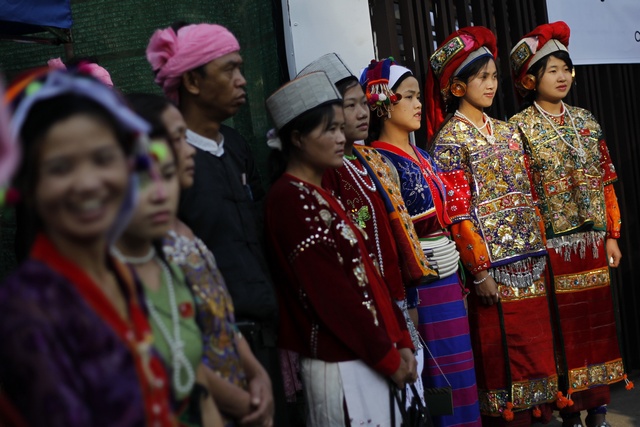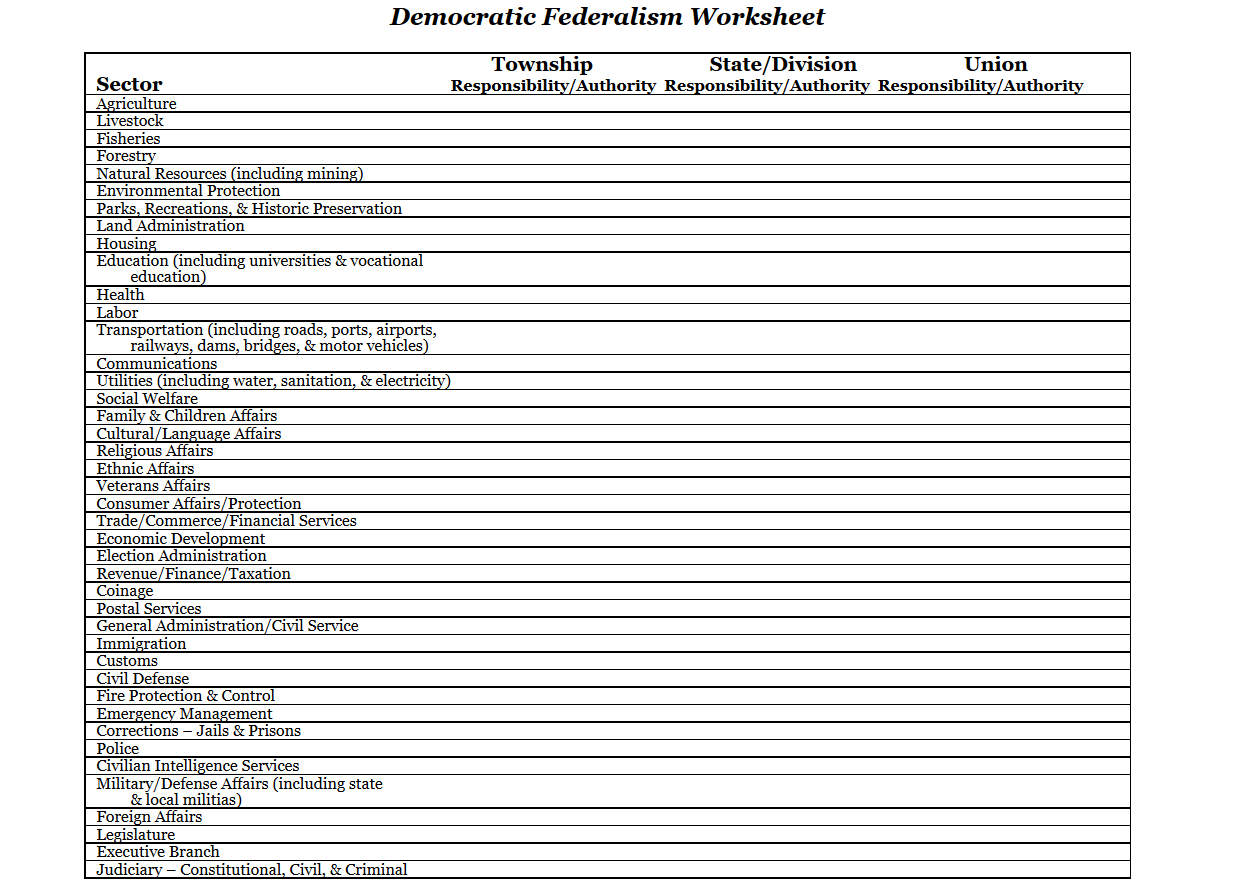Federalism has been posited as one of the solutions toward resolving the ethnic conflict in Burma and achieving long sought sustainable peace. Toward understanding the concept of federalism, many study trips have been made to Western countries, workshops held in Burma and Thailand (for ethnic political/armed/civil society groups), and various “Federal Union of Burma” constitutions created. For some reason, only Western “federalism” models, such as those of Switzerland, Germany, Canada, and the USA, seems to be the ones examined for applicability to Burma.
However, Burma has unique multi-ethnic, multi-lingual, and multi-religious characteristics. It is first and foremost an Asian country with related, yet distinctive cultures, traditions, histories, social and economic conditions, and political realities. Added to this are a decades-long multi-ethnic conflict and a military (Tatmadaw) whose strategic culture sees itself as the sole guardian of the country and accountable only to itself.
There is an Asian country with a federal system of government and characteristics similar to Burma. Yet it does not seem worthy of study — no study visits or workshops there, no visits of their officials or academics to Burma or Thailand, no workshops in Burma or Thailand, and no papers about the applicability of its federal system of government to Burma. That country is India, which appears to be the only global federal model close in characteristics to Burma. It is Asian, multi-ethnic, multi-lingual, and multi-religious with long-running ethnic insurgencies. As with Burma, India was a former British colony. During one period of British occupation, the governance of Burma was administered from India with the wide use of Indian civil servants in Burma. Large numbers of Indian people now live Burma and call it their home country. The fascination with things “Western” now overlooks the obvious or degrade that which is “Asian”. The federal system of India deserves serious study toward an understanding of “federalism” within an Asian context if for nothing else.
[related]
But no matter the models of federalism studied, any resultant federal system for Burma must conform to Burma’s specific characteristics. It must fit Burma, yet not be a reshaped top-down square peg of a Western or Indian federal system designed by the political elite to try to fit the Burma round hole of power sharing. It would not be sustainable.
So how does one reconcile the concepts of equitable power sharing with Burma’s diverse ethnicity, languages, and religions; decades of conflict; Burman nationalism; and Tatmadaw strategic culture as well as Confucian ideals (including notions of a patron-client relationship, whereby the former provides protection in exchange for loyalty from the latter) to evolve a unique form of federalism for Burma that is functionally effective, sustainable, and contributes to long-term peace and stability in the country?
Any such federal system of government for Burma should:
- Fit Burma’s unique multidimensional social, economic, and political characteristics.
- Protect against Tatmadaw political interference and Burman social, economic, and political domination from the Union level and ethnic nationalists’ social, economic, and political domination from the state level, as well as curb secessionist’s tendencies at the state level.
- Be consistent with democracy, i.e., power is in the hands of the people and flows upwards from them.
- Give the people a feeling of strong ownership of the system.
It should be understood that top-down federalism is elitist and autocratic, and not consistent with democracy. In a democracy, power sharing should flow upwards from the people, not downwards from the elite, to truly provide governance of, by, and for the people. Others would say that it should flow both downwards and upwards. But in practice, that process usually ends up flowing only one way – downwards from the top.
Sovereign power and authority in a democracy must lie in the hands of, and be directly derived from, the people. Within this context, the people delegate and concentrate specific responsibilities and corresponding limited authority — political, civil administrative, fiscal/economic/resource, territorial, and security — at appropriate vertical and horizontal levels of government. The operative vertical levels of government in Burma recommended by this writer are township, state/division, and Union. Horizontal levels of government are the executive, parliamentary, and judicial branches at each vertical government level. The Tatmadaw is no longer a government branch, but under the executive branch.
This “bottom-up” approach to vertical and horizontal power sharing begins at the township level and then flows upwards next to the state/division level, and lastly, to the Union level with some responsibilities and corresponding authority shared among these three levels of government. At each level, responsibilities and corresponding authority move horizontally, in such proportions, on such terms, and under such limitations as deemed necessary, to the appropriate executive, parliamentary, and judicial branch. The end result is vertical and horizontal political, civil administrative, fiscal/economic/resource, territorial, and security power sharing among Union, states/divisions, and townships through power sharing compacts made by the people. Any powers not expressively delegated to governments rest solely with the people, especially rights to personal security, to own and use land, free speech/expression/press, free assembly, and free religion expression.
The following is a Democratic Federalism Worksheet that the people can use to begin to delegate responsibilities and respective authority, vertically and horizontally, to appropriate government levels and branches:
The process begins in each township with meetings held for local people to use the Worksheet as a template to assign responsibilities and respective authority, by sector and across branches of government, beginning at the Township Level of government, moving then to the State/Division Level of government, and finally, to the Union Level of government. A national federalism conference would then be held with one representative appointed by each township in Burma. The conference representatives will meet in sector forums, using the Worksheet framework, to negotiate the final assignment of responsibilities and respective authorities, again beginning at the Township Level of government. The results will produce the basis for a federal system of government appropriate to Burma and to be incorporated into a new Union Constitution.
In studies of federalism in respect to Burma, the importance of the judicial branch of government is not appreciated. An independent constitutional judiciary, at both the Union and state/division levels, is necessary to mediate power sharing among the multiple levels and branches of government in behalf of the people. It would also provide oversight to keep governance within the limits assigned to their authority. But such a constitutional judiciary should not be so strong at the Union level to undermine the power sharing at sub-Union levels and the rights reserved to the people. Moreover, civil society must assume their roles as “watchdogs” to provide another layer of oversight, and checks and balances on the government.
Townships provide the logical foundation for this vertical and horizontal power sharing. The townships, not districts, are the basis for parliamentary representation in both the Union and state/division parliaments. Because townships are the basis for parliamentary representation at the Union and state/division levels, there is a natural link with township governance to Union and state/division governance. Local control and decision making — executive, legislative, and judicial — at the township level over issues which directly affect communities on a day-to-day basis, would be more responsive to constituents, and hold the people more responsible for their own governance and well-being. Most importantly, democratic federalism brings democracy, self-governance, and accountability closer to the people.
Strong power at the township level dilutes nationalist/autocratic tendencies at the state/division and Union levels, and secessionist tendencies at the state/division level. Thus, the secessionist “fears” of the Tatmadaw should disappear. Over recent decades, these “secessionist fears” have had no basis in fact and were simply used as political and negotiation tactics for the Tatmadaw to maintain central control of the levers of powers in the country.
The existing Asian patron-client government structure in Burma is centralized and elitist with the Union government as the “Patron” and sub-Union governments and the people as the “Clients”. Democratic federalism makes the people the “Patron” and the Union and sub-Unions governments become the “Clients”.
The end effect of this democratic federalism approach to power sharing is to enhance the overall responsiveness of the government to citizens and ownership of government by the people, shift from elite/personality-driven politics to those of local identities, pre-empt “Burmanisation”, minimise the attraction of secession, and provide the environment for long-term sustainable peace.
Moe Gyo is a political consultant and strategist, working for Strategic Border Consulting in Mae Sot, Thailand.




